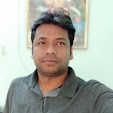Tuesday, September 7, 2010
KMS is growing n growing
Saturday, July 28, 2007
Intro to Kulta Maha Sabha (KMS)

Jai Shree Shree Raneswara Ramachandi ki...... Jai
Home Page of KMSKulta Maha Sabha (KMS) is a dedicated community to re-unite the youth belongs to Kulta cast. The main objective of KMS is to discover & inform about the customs, tradition , culture of the kulta samaj, one of the oldest cast in India, to the people belongs to kulta cast, so that they can feel proud of themselves & will be in a position to tell others about the greatness of the Kulta Cast. The word kulta synonymsly use as "Kulita", "Kulta", "Kuilta". Aslo in some parts of Orissa they are also called "Chasa".
KMS has a community in orkut called on its name "Kulta Maha Sabha" Also There is a KMS group on Google group, the name is also same there "Kulta Maha Sabha" . There are few more communities on orkut featuring kulta cast, but KMS is the prominent one.
The Kulta Cast : Origination
There is an interesting oral narrative regarding the origin of the three agriculturist castes of West Orissa namely Sudh, Dumal and Kulta. It is said that during banabasa (exile), Ramachandra was wandering in the forests of Sambalpur region. Once, he met three brothers and asked them for water. Out of these brothers, one brought water in a clean brass pot and as such was called Sudh, meaning pure. The second brother made a dana (cup of leaves) and drew water from a well with a rope. Hence, he was known as Dumal. This name Dumal is derived from the words Dori-mal meaning a coil or the chord of rope. The third brother is said to have brought water in a hollow gourd. So, he was named Kulta, which is derived from the word Kurita.
But according to another oral tradition, the Kultas migrated from Ayodhya to Boudh. Their ancestors were employed in the royal house-hold of Raja Dasaratha. They accompanied Ramachandra, Lakshmana and Sita in their banabasa (exile) and settled in Boudh during their wandering. Sarsara and Jagati of Boudh are considered to be the main centres of the Kultas. Therefrom, they migrated and settled in different parts of west Orissa. This may be corroborated by the claim of the Kultas of Sambalpur who say that their ancestors lived in Boudh. Also, some of them identify themselves as the Sarsara Kultas and Jagati Kultas. Writing of Cobden Ramsay about the Kultas also substantiates this contention. He writes that the Kultas worship the goddess Ramachandi, whose principal shrine is situated at Sarsara (quoted in Senapati and Sahu, 1968:101).
Monday, May 14, 2007
The Kulta Cast : Socia-Economic Conditions
A brief Introduction to Kulta Cast :
Kultas belong to a great socio-economic group because Jagati and Sarsara have been a seat of Vaishnavism and Saivism from hoary past. There is one shrine at Sarsara dedicated to Lord Baidyanath. Near the village Jagati at Gandharadi is situated the famous twin temples of Lord Nilamadhaba and Lord Siddheswara exactly similar to each other. Such type of twin temples constructed on a common platform are seen nowhere in the medieval period. Nilamadhaba temple is dedicated to Lord Vishnu whereas Siddheswara temple is dedicated to Lord Siva. These twin temples exhibit a harmonious coexistence of Saivism along with Vaishnavism. On the basis of the detailed analysis of structural and sculptural features, it becomes clear that these temples may be dated back to the later half of the eighth or first half of the ninth century AD (Senapati and Kuanr, 1983:379-80; Panda, 2004:22). What we want to suggest here is that Kultas belong to a glorious tradition.
The famous twin-temples of Gandharadi, otherwise called Hari-Hara temple and the archaeological remains found in its vicinity speak of the past glory of the region. The significance of the Gandharadi temples lies in the fact that they represent the co-existence of the two major religious faiths of west Orissa during that period. Religious synthesis between Saivism and Vaishnavism achieved a noteworthy success in this place during the eighth-ninth century AD. Thus, historically speaking, Kultas have been associated with a glorious religion-cultural tradition although their principal deity is Ramachandi. It was the period when Lord Vishnu elicited great reverence like Lord Siva in Jagati. The above analysis suggests that in Jagati a great civilization flourished since at least eighth century AD (Sahu and others, 1981:131; Senapati and Kuanr, 1983:33, 134, 379-80; Behera, 1991:310-11; Panda, 2004:22). History of Surnames : The surname of four Kulta families given as dowry to patna Raja were Pradhan, Sahu, Naik and Biswal. Besides that Bhoi title is also found among the Kultas (Senapati and Mahanti, 1971:115; Senapati and Kunar, 1983:63). In the present state of our knowledge, we cannot say convincingly the precise time and the regime when and by whom these Kultas families were offered to the Raja of Patnagarh, who gave enough boasting to the Kultas and Dumals so that the agricultural situation of Patnagarh could be improved and enriched.
